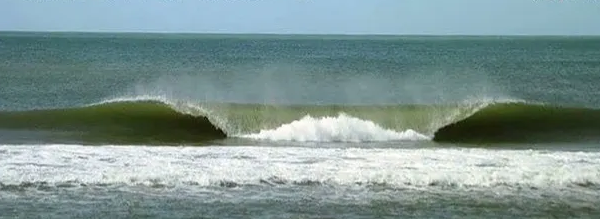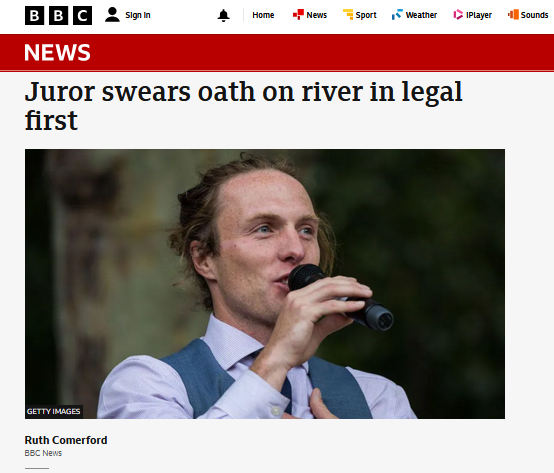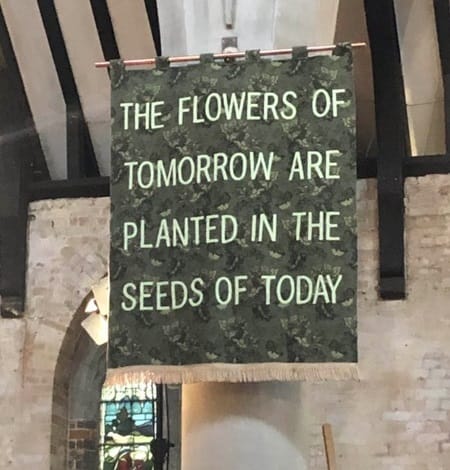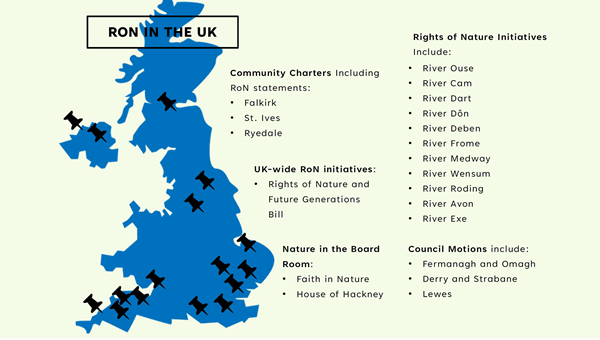Waves in Brazil granted Rights of Nature: Analysis

In an interesting recent Rights of Nature development, the municipal council of Linhares, a coastal city in southeastern Brazil's Espirito Santo State, has recognised the waves of the Doce River Mouth (‘as Ondas na Foz do Rio Doce’) as having legal rights.

The waves at the mouth of the river are excellent for surfing, with the nearby surf town of Regência being a popular surfing and tourism destination. Yet in 2015, a catastrophic pollution event happened upriver when the Fundão wastewater dam at the Germano Mine failed. Toxic sludge was released into the Doce River, causing huge ecological damage as well as devastating a nearby town and causing 17 deaths, and flowed into the Atlantic ocean,. The surfing was badly affected, as the dumping of mud affected the flow from the river which provided the conditions for the waves.
The Linhares waves ordinance is the latest in a significant Rights of Nature movement in Brazil, which sees constitutional amendments submitted in multiple states and a dozen or so municipalities passing Rights of Nature ordinances – though nothing at the national level yet.
The ordinance includes that the waves are entitled to:
- Preservation of physical-chemical conditions for ecological balance
- Protection of water bodies in the ecosystem to prevent human interference with vital ecological cycle
- Promotion of harmonious interactions with humans through cultural, spiritual, leisure, and ecological practices
The ordinance also seeks to “ensure representation by stakeholders with a special connection to the waves' ecological cycle in relevant public decision-making processes” and that the waves should “receive support from government, community, and civil society groups in public decision-making processes”.

Waves as a Subject?
This is the first time (to my knowledge) that ‘waves’ specifically have been the rights-subject. Rights of Nature initiatives generally focus on living parts of nature, granting legal subjecthood or rights either for nature as an abstract totality (including as ‘Mother Nature’) or for particular ecosystems, habitats and species. Where ‘rivers’ have been subjects, this is has been about the entire ecosystem and all of the living beings in and around the river, not simply about the flow of the water. Inorganic ecological or natural processes are usually included, but as part of this wider ecosystem. Establishing the physical process of ‘waves’, a flow pattern of an inorganic natural cycle, is therefore unusual – and this might not only be the first time ‘waves’ are the rights subject, but perhaps even the first inorganic rights-subject.
Though it may be unusual, this is not a problem: there is nothing preventing legal protection from being given to the physical process of ‘waves’. Law is a social construct, and there is no reason why ‘waves’ cannot be established as a legal subject and bearer of rights in the system while not being living. The translation from the (real) territory to the (legal) map will always involve some sort of translation and conceptual representation, and nature-subjects such as rivers and forests are not themselves a particular entity as such either. ‘Waves’ as a legal entity do not seem to pose a particular issue.
There is still a tension here at the ‘boundary’ between organic and inorganic. Rights of Nature, arguing for an extension from humans to the more-than-human, typically has long had a strong emphasis on living beings. The Bolivian law, for example, mentions natural processes in relation to sustaining life:
“The right to maintain the integrity of life systems and the natural processes which sustain them, and capacities and conditions for their regeneration.” (Law 71, Art 7 (1)).
Yet although the focus is generally on life and living entities, inorganic processes have always been meant to be within the scope of Rights of Nature. The Universal Declaration of the Rights of Mother Earth describes Mother Earth as a ‘community of interrelated beings’ (Art 1 (2)), and in Art 1 (5) says that there should not be distinction between ‘organic and inorganic beings’. Art 2 (1) [c] talks of ‘vital cycles’ and ‘processes’, and Art 3 (2) f talks of ‘ecological cycles’ and ‘processes’. The Universal Declaration of the Rights of Rivers mentions ‘health’ and the role of rivers for ecosystems and natural beings, but the first right is ‘the right to flow’ (Art 3 (1)) with an explanatory footnote that this must include ‘natural flow patterns’ as well as relating to ecosystem health.
Why speak for the waves?
There is a question about what is being protected – and for whose benefit.
Typically, Rights of Nature approaches are used for protecting living entities, which are generally recognised to have intrinsic value and establishable interests. When an ecosystem, river or territory is given rights, these run to the benefit of various plants, animals and microorganisms. Inorganic processes are intertwined with these but not generally protected in isolation, as discussed above.
Yet with the Doce River Mouth Waves, there does not seem to be any significance of any non-human natural interests in play. Instead, it is about preserving water flows which are beneficial to humans: it seems clear that protecting good surfing conditions is the primary purpose. This explains why the inorganic flow process has been singled out. The committee to represent the waves is made by ‘stakeholders with a special connection to the waves’ ecological cycle’, and a commentator says that ‘A committee comprising surfers representing the community, traditional custodians, and a city council’s environmental chamber member will represent the waves in granting their rights.’
This seems to be a clear case of Rights of Nature primarily for human benefit – though it for sure is part of a wider campaign against the damage caused by mining and efforts to restore the Rio Doce. I mean this by way of a description of the purpose, not as a criticism.

There are often overlaps of the interests of human and non-human beings – in general, much more mutualism than antagonism. The benefits are typically mutually supportive: humans need ecologically safe environments; humans get non-health benefits from healthy ecosystems; and securing a healthy environment for humans usually means a healthier ecosystem. Many legal cases involve violations of both Rights of Nature and human rights of local communities and/or indigenous people, and the (human) Right to a Healthy Environment and Rights of Nature are generally recognised as interrelated.
Politically, these interests often come together to form an ‘alliance’ in opposition to an ‘external’ threat, such as a mine, which would harm local humans and wildlife alike. This is a common dynamic with Rights of Nature cases, where local (often indigenous) communities act to protect Rights of Nature, often also acting to protect their human rights, against an external threat, such as extractive industries or a government-supported development project. There are, of course, also 'pure' Rights of Nature cases, where nature is protected either without any intersection of human activity intersection or against activities of a local community. That being said, we will almost always see human activities and interests on both sides of a case, as human conflict and social relations are entangled with the ecological world!
So, although the Doce River Mouth Waves might be being protected primarily for human benefit, this is not a bad thing. There are bound to be positive ecological spillovers; both from protecting the waves themselves, and because protecting the waves will require protecting the water and surrounding areas too. Preventing human interference with vital ecological cycles is generally going to be good! Even a human-nonhuman alliance which has a primary focus on human use can be mutually beneficial – insofar as the human interest being protected is not ecologically harmful – as people who spend time in ecosystems tend to care more about them, and healthy ecosystems attract more people. A similar example would be the Surfers Against Sewage campaign in the UK, where much of the discussion about freshwater pollution is about human illness and being unable to bathe or fish instead of the ecological harm being done (though this of course is part of the conversation too).

Legal Significance?
The short answer is that this local ordinance will have little legal significance. While the actual legal effect depends on the jurisdiction, local ordinances typically can only have legal effects at the same scale – and the pollution of the Rio Doce had little to do with any activities within the control of the municipality. While there may be some local environmental benefits, the ordinance will be ineffective against upstream polluters.
As it happens, there are two upstream initiatives which would be more significant in the state of Minas Gerais, where most of the Rio Doce is and where the Germano Mine is located, to add Rights of Nature to the state constitution. There is both a proposed constitutional amendment to add Rights of Nature to the state constitution, and proposed legislation to establish the river specifically as a rights-subject and establish a committee of guardians, including two indigenous peoples who live in relation to the river.
The main importance of the Linhares local ordinance will be the political significance. Often, the purpose of such laws isn’t about the legal protection itself but about the political campaign and establishing representatives to speak for nature. The proposed legal changes in Minas Gerais would have far more legal significance, depending on the relationship between state and national law in Brazil. Recognising the waves as having rights will make for stronger cultural arguments and add to the momentum to restore the river, and harness the passion of surfers to campaign for stronger environmental protection upstream – potentially bringing surfers and the tourism industry into an alliance with upstream indigenous communities. Hopefully, the Rio Doce Waves ordinance will encourage other such initiatives around the world, and more attention will be given to protecting inorganic natural processes.
You can subscribe to receive new blog posts via our email newsletter here:




